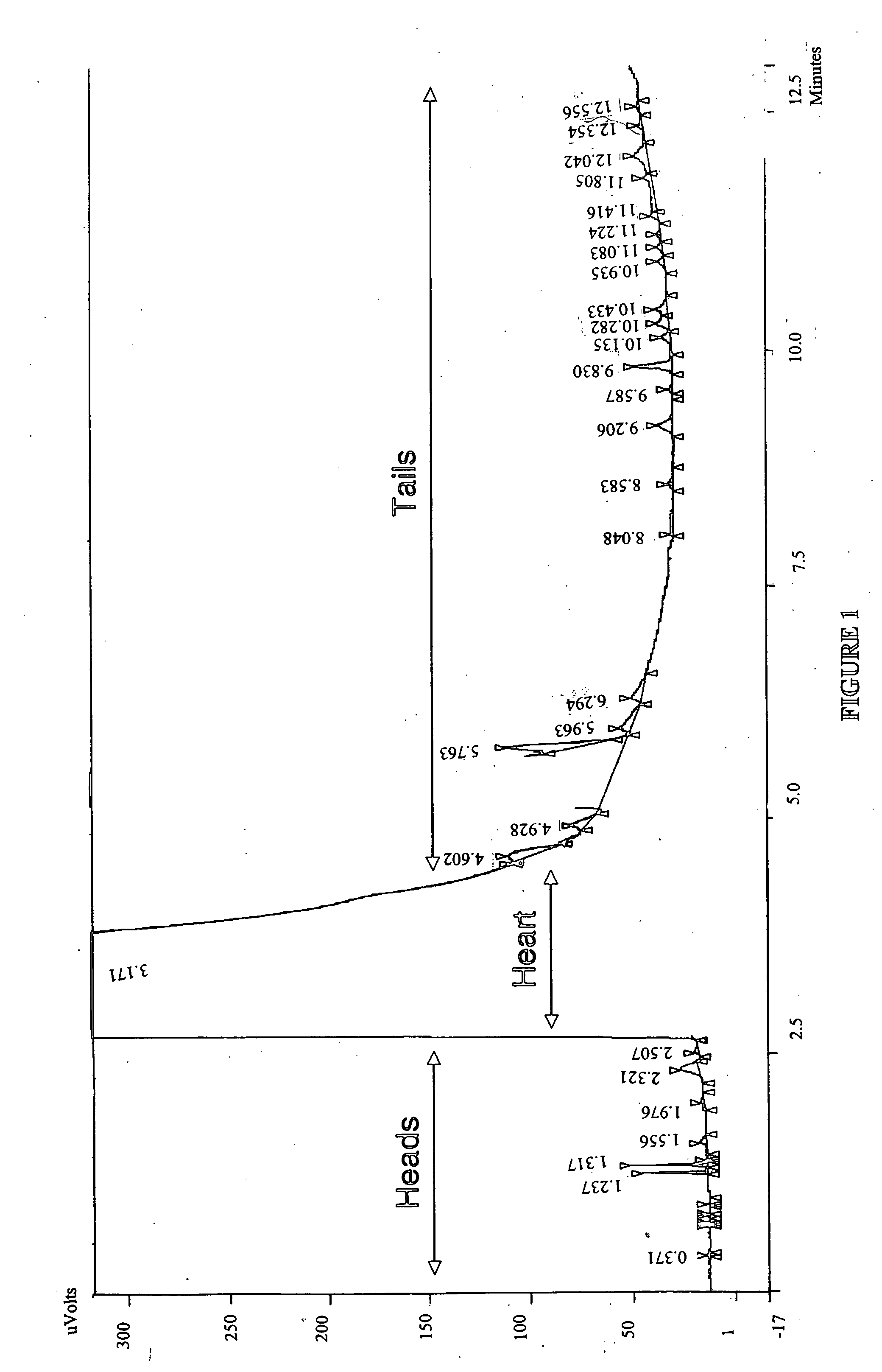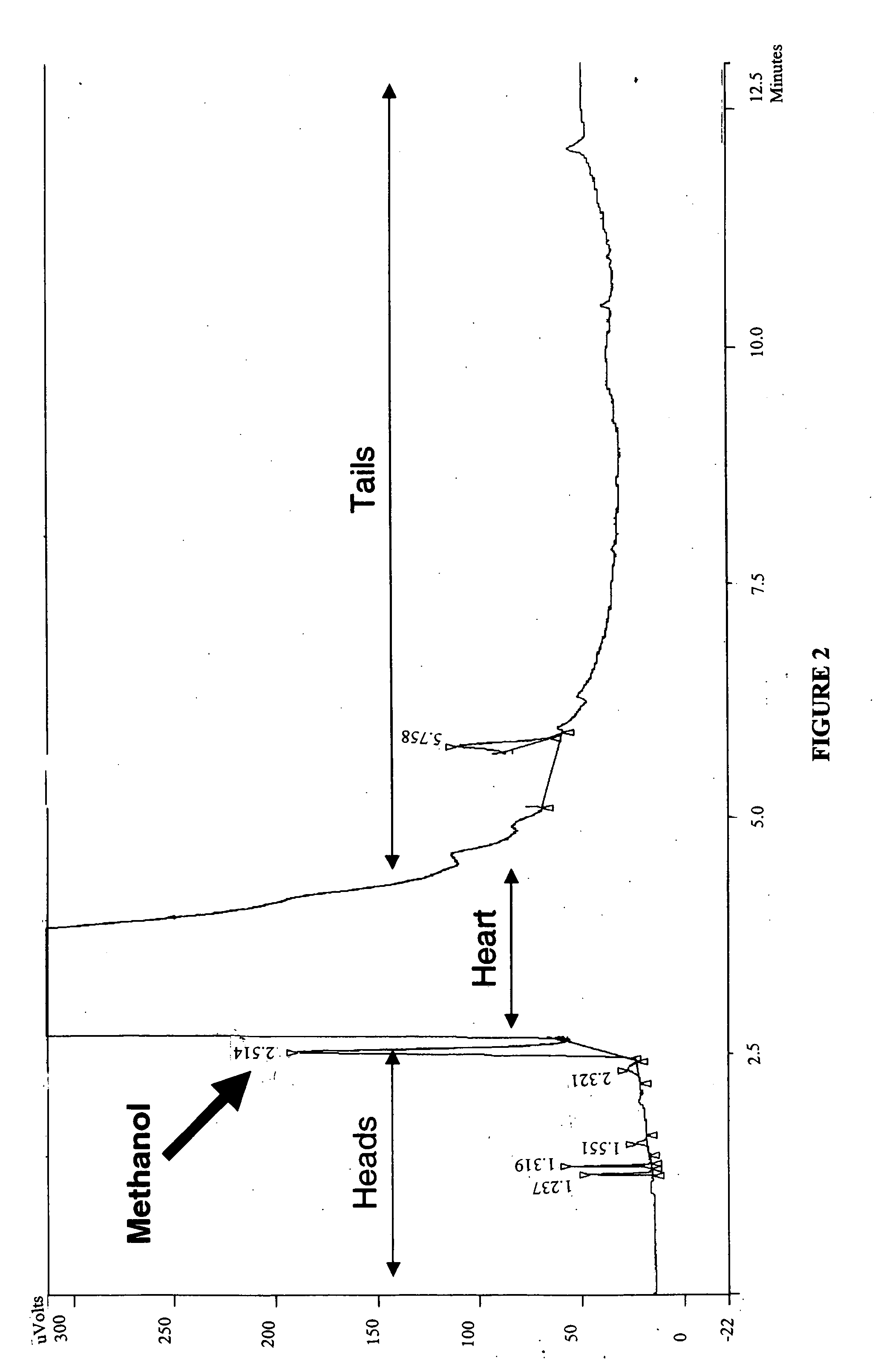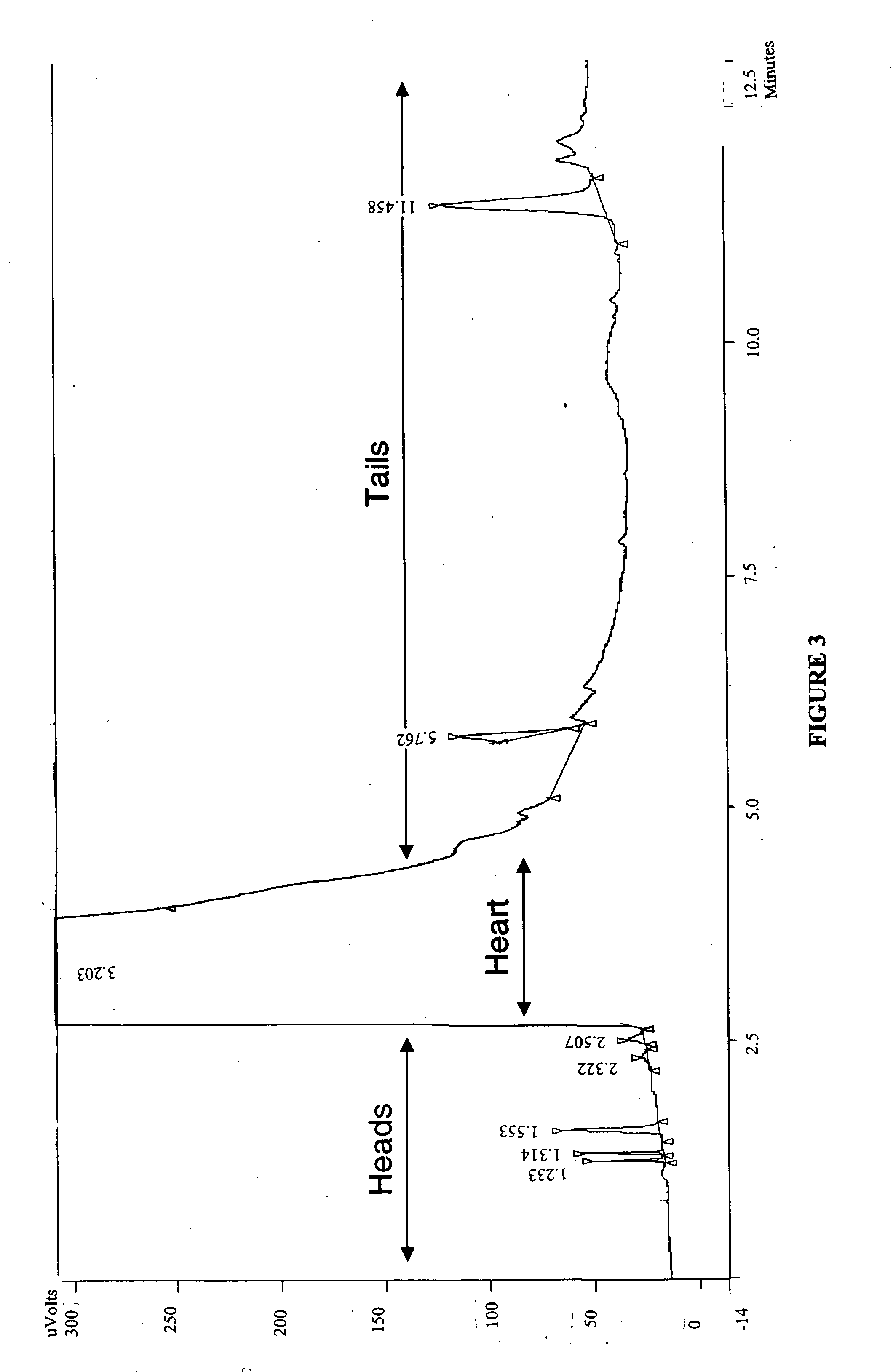Process for producing vodka
a technology for vodka and vodka, applied in the field of vodka production process, can solve the problems of low quality of vodka, significant amounts of undesirable alcohol, poor taste and odor,
- Summary
- Abstract
- Description
- Claims
- Application Information
AI Technical Summary
Benefits of technology
Problems solved by technology
Method used
Image
Examples
Embodiment Construction
[0009] For a better understanding of the present invention, reference may be had to the following detailed description taken in conjunction with the accompanying drawings. The present invention is a process for producing high quality vodka. The process of the present invention begins with the selection of the grain used to produce the vodka. Preferably, whole, unbroken organic white corn having a moisture content below 14.0% is used in the process. The process of producing high quality vodka from the organic white corn generally comprises six steps.
[0010] In step 1 or the milling step, the organic white corn is milled to expose the starches in the corn and prepare the corn for the cooking and fermentation steps. In the milling step, the organic white corn is passed though one or more hammer mills that grind the white corn into a corn powder, which is typically referred to as corn mash. For example, hammer mills containing 160 hammers traveling at approximately 3,600 RPM may be used...
PUM
| Property | Measurement | Unit |
|---|---|---|
| pressure | aaaaa | aaaaa |
| temperature | aaaaa | aaaaa |
| temperature | aaaaa | aaaaa |
Abstract
Description
Claims
Application Information
 Login to View More
Login to View More - R&D
- Intellectual Property
- Life Sciences
- Materials
- Tech Scout
- Unparalleled Data Quality
- Higher Quality Content
- 60% Fewer Hallucinations
Browse by: Latest US Patents, China's latest patents, Technical Efficacy Thesaurus, Application Domain, Technology Topic, Popular Technical Reports.
© 2025 PatSnap. All rights reserved.Legal|Privacy policy|Modern Slavery Act Transparency Statement|Sitemap|About US| Contact US: help@patsnap.com



